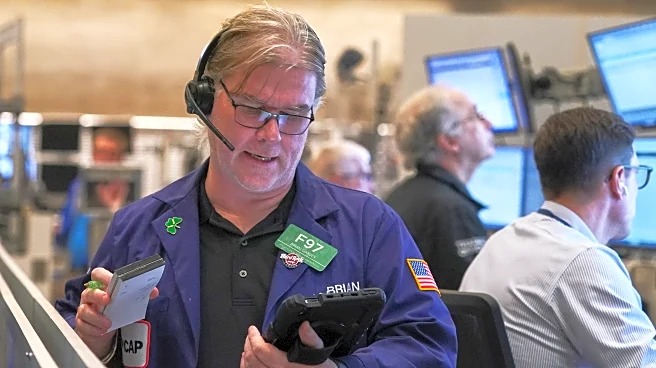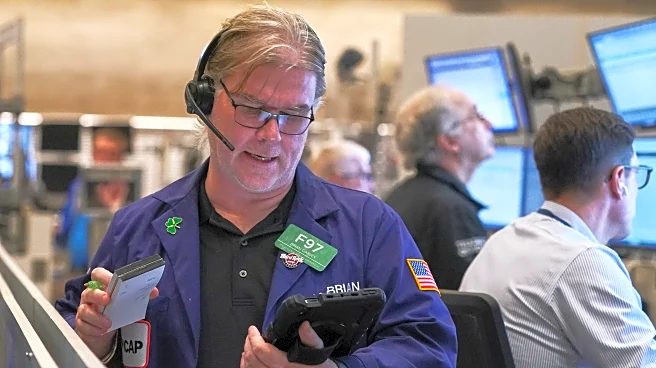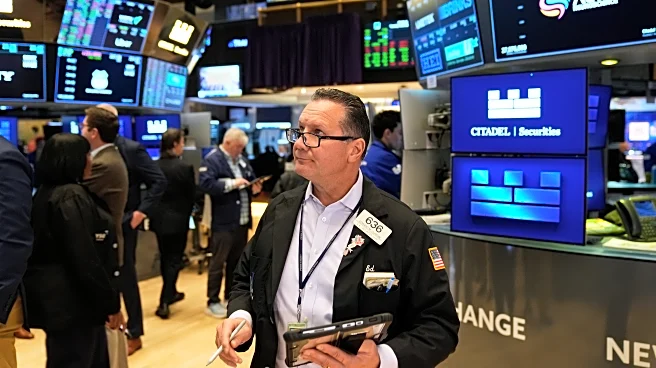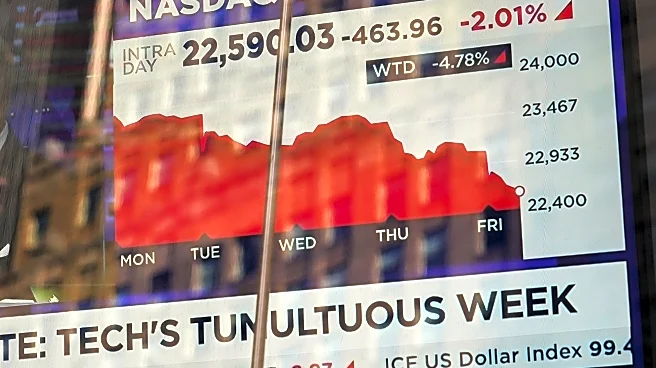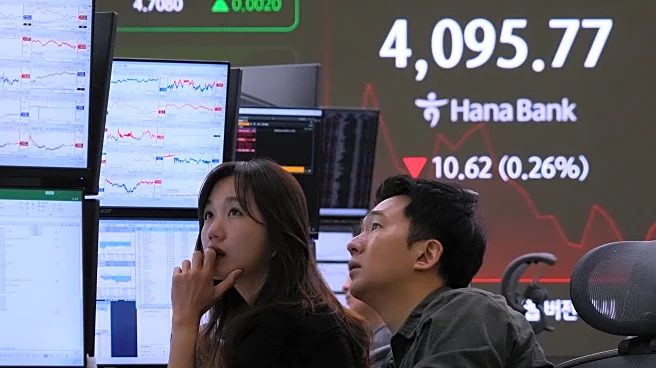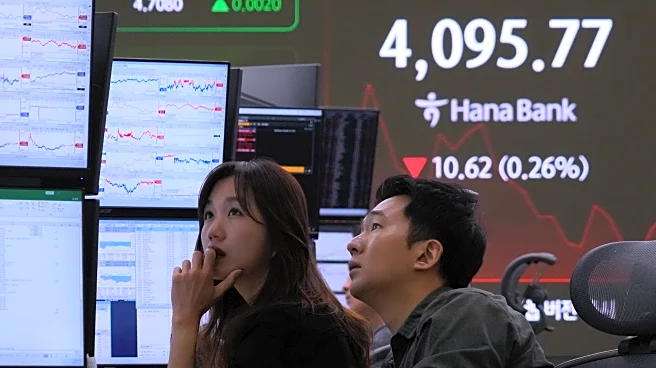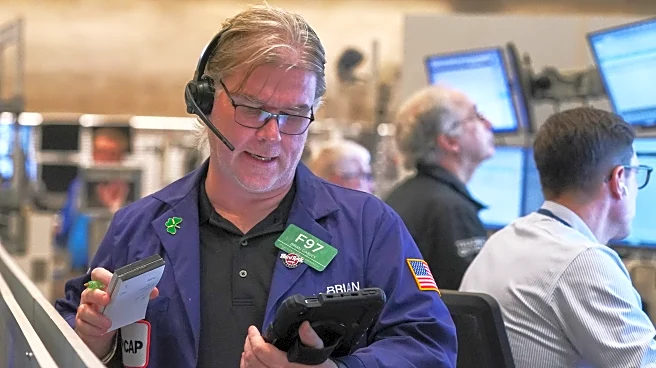What's Happening?
Goldman Sachs strategist Peter Oppenheimer forecasts a significant slowdown in U.S. stock market returns over the next decade. The S&P 500 is expected to deliver an annualized return of 6.5%, including dividends, compared to nearly 15% in the past decade. This
projection is based on anticipated earnings per share growth of 6%, a 1% annualized decline in valuations, and a 1.4% average dividend yield. Despite high current valuations, Oppenheimer suggests that U.S. equity valuations may remain above long-term averages due to trends in interest rates and corporate profitability.
Why It's Important?
The predicted slowdown in stock market growth could have significant implications for investors and the broader economy. With lower expected returns, investors may seek alternative investment opportunities, potentially impacting capital flows and market dynamics. The reliance on high valuations and earnings growth from major firms, particularly those involved in artificial intelligence, underscores the importance of innovation and profitability in sustaining market performance. A shift in these factors could alter investment strategies and economic forecasts.
What's Next?
Investors may need to adjust their portfolios in response to the anticipated changes in market returns. The comparison of dividend yields with Treasury note yields suggests potential shifts in investment preferences, with some investors possibly favoring fixed-income securities over equities. Monitoring interest rate trends and corporate profitability will be crucial in assessing future market conditions and investment opportunities.
Beyond the Headlines
The focus on AI-driven earnings growth highlights the transformative impact of technology on market valuations and investor expectations. As AI continues to drive innovation, ethical and regulatory considerations may emerge, influencing corporate strategies and market behavior. The long-term sustainability of high valuations and earnings growth will depend on the ability of companies to adapt to evolving technological and economic landscapes.


